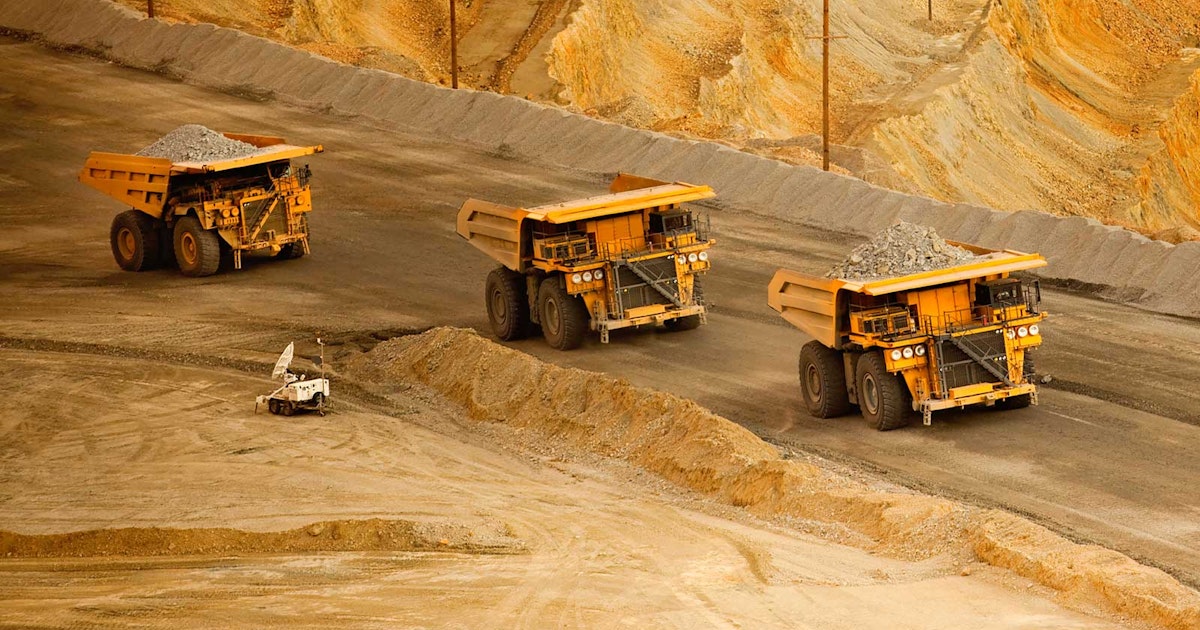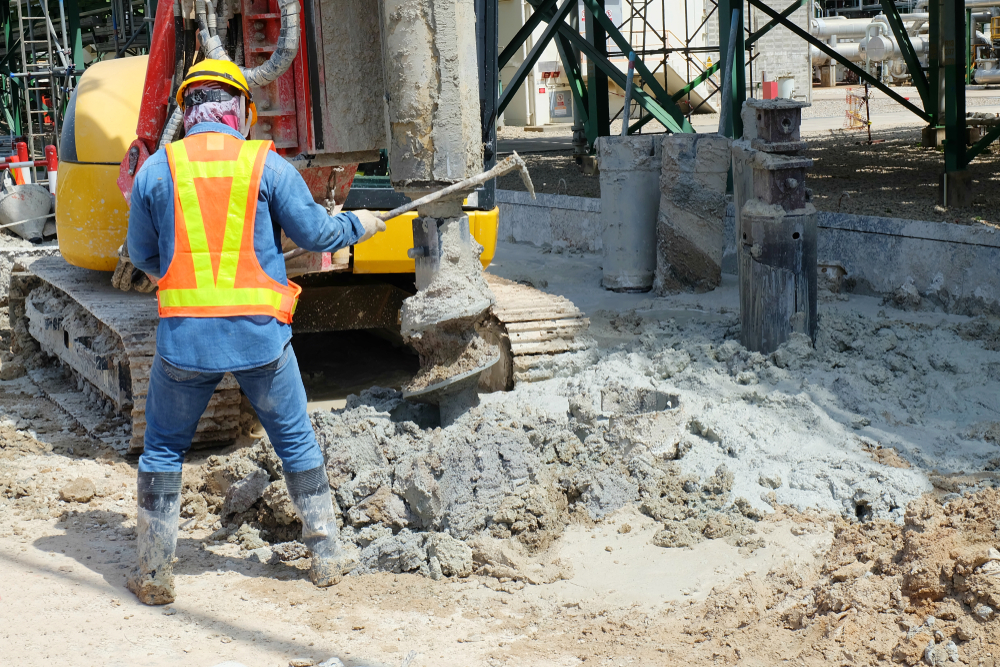Understanding the Principles: About Geotechnical Engineering in Modern Construction
Understanding the Principles: About Geotechnical Engineering in Modern Construction
Blog Article
The Relevance of Geotechnical Design in Attending To Ecological Obstacles and Enhancing Building Safety
Geotechnical design works as a foundation in the intersection of ecological stewardship and construction security, giving critical understandings into the habits of dirt and rock under numerous problems. This discipline not just addresses pressing ecological difficulties such as dirt erosion and groundwater security but likewise boosts the effectiveness of framework against natural dangers. By carrying out calculated site investigations and customized mitigation actions, geotechnical designers play a vital function in guarding both human lives and eco-friendly stability. The complexities of these obstacles raise essential questions concerning the future instructions of this field and its ramifications for lasting development.

Function of Geotechnical Design
Geotechnical engineering plays a critical function in the layout and building and construction of framework by attending to the actions of soil and rock products under numerous conditions. This field of design is essential for recognizing the communication in between frameworks and the ground, that includes establishing the load-bearing capacity of dirt, analyzing security, and predicting possible settlement or failure.
Geotechnical engineers are accountable for carrying out site examinations, which entail tasting and screening dirt and rock to collect data on their physical and chemical residential or commercial properties. This info is essential for developing structures, retaining walls, and various other earth-retaining frameworks that guarantee safety and longevity. Additionally, geotechnical design informs the option of appropriate construction techniques and materials, thus reducing threats connected with soil actions.
Furthermore, the integration of geotechnical engineering principles right into metropolitan planning and ecological monitoring is essential for dealing with obstacles such as ground contamination and groundwater administration. By comprehending geotechnical elements, designers can develop sustainable services that improve the durability of framework versus natural threats, while also advertising environmental stewardship. Eventually, the duty of geotechnical engineering is essential for accomplishing secure, sturdy, and eco aware building and construction practices.
Dirt Erosion Mitigation
Soil erosion postures a substantial hazard to both ecological security and facilities honesty, affecting around 24 billion lots of fertile dirt shed every year worldwide. This phenomenon is intensified by aspects such as logging, urbanization, and bad agricultural techniques. Geotechnical engineering plays a pivotal duty in developing efficient dirt disintegration mitigation methods that secure both the environment and building and construction projects.
One method requires the implementation of disintegration control approaches such as plants planting, which maintains dirt with root systems. Furthermore, the building and construction of preserving terraces and wall surfaces can properly reduce surface area drainage and shield prone locations from erosion. Correct drain layout is additionally important; it decreases water accumulation and routes excess overflow far from essential frameworks.
Furthermore, geotechnical engineers utilize soil stabilization techniques, such as the application of geotextiles and naturally degradable floor coverings, to boost soil cohesion and prevent destruction - geotechnical specialist. Normal tracking and assessment of erosion-prone sites enable timely interventions, ensuring lasting sustainability. By integrating these techniques, geotechnical design not only minimizes the impacts of soil erosion however likewise adds to the strength of facilities against environmental obstacles, ultimately cultivating a more secure and more sustainable built environment
Groundwater Security Strategies
Groundwater offers as an essential source for alcohol consumption water, farming, and commercial procedures, making its protection crucial for ecological sustainability and public health and wellness. Efficient groundwater defense methods are crucial in mitigating contamination dangers and making sure the longevity of this resource.

Normal tracking of groundwater quality is also essential, making it possible for very early discovery of contamination sources and helping with prompt remediation efforts. Utilizing sophisticated modern technologies, such as geophysical studies and remote picking up, help in recognizing possible dangers to groundwater gets.
Additionally, public education and learning and stakeholder interaction are critical, promoting community support for groundwater protection initiatives. geotechnical companies in south africa. By combining governing steps, technological developments, and area involvement, we can create a thorough structure that safeguards groundwater resources while advertising sustainable development and building and construction practices
Landslide Threat Administration
Landslides pose considerable hazards to both human security and infrastructure, making effective risk monitoring approaches vital. Geotechnical engineering plays a vital role in recognizing, evaluating, and mitigating landslide threats. An extensive understanding of incline stability, soil mechanics, and hydrology is important for establishing effective risk administration plans.
The first action in landslide threat monitoring includes complete website investigations, which include geological mapping and dirt screening. These investigations help designers examine the possibility for landslides by determining essential factors such as slope angles, soil composition, and water content. Making use of sophisticated technologies such as remote sensing and geophysical surveys can boost the precision of these evaluations.
As soon as dangers are recognized, appropriate mitigation measures can be executed. These might include engineering solutions such as keeping wall surfaces, water drainage systems, and slope stabilization techniques. Monitoring systems need to be developed to discover indicators of ground motion and modifications in water levels, allowing for positive interventions.

Enhancing Building Safety
Building and construction websites often present a myriad of risks that can endanger worker click here to find out more safety and task integrity. Geotechnical design plays an important duty in improving building safety by offering essential understandings into subsurface problems. With thorough soil and rock analysis, geotechnical designers can recognize prospective threats, such as soil instability, groundwater concerns, and seismic vulnerabilities, which may endanger the safety of building tasks.
Implementing geotechnical solutions, such as correct structure layout and using keeping structures, alleviates these threats substantially. click to read These options not only ensure the security of the frameworks being built but additionally develop a safer working setting for construction workers. Additionally, extensive tracking and analysis of site problems throughout the building procedure are important. Utilizing innovative innovations like ground-penetrating radar and inclinometer systems makes it possible for real-time information collection, enabling for timely interventions when hazards are discovered.
Furthermore, cultivating a society of safety and security through training and adherence to developed safety and security methods further improves building site security. By incorporating geotechnical knowledge into the preparation and implementation phases, building and construction jobs can achieve higher safety requirements, ultimately protecting workers and guaranteeing effective job conclusion.
Final Thought
Finally, geotechnical engineering functions as a crucial self-control in promoting and dealing with environmental difficulties building and construction safety. Through reliable soil erosion reduction, groundwater security strategies, and landslide danger monitoring, geotechnical designers add to the advancement of durable infrastructure. The assimilation of these techniques cultivates a safer building and construction setting and enhances the sustainability of civil design jobs. Ultimately, the proficiency of geotechnical designers is vital in guarding both natural resources and human lives versus potential hazards.
Geotechnical design offers as a keystone in the crossway of ecological stewardship and building safety, providing essential insights right into the behavior of soil and rock under various conditions. Geotechnical design notifies the choice of appropriate construction techniques and products, therefore reducing dangers linked with soil habits.
Geotechnical design plays an essential duty in creating efficient soil disintegration reduction techniques that protect both the environment and building and construction jobs.
Additionally, geotechnical engineers utilize dirt stablizing methods, such as the application of geotextiles and biodegradable mats, to enhance soil cohesion and protect against degradation. Via detailed dirt and rock evaluation, geotechnical engineers can identify possible dangers, such as soil instability, groundwater problems, and seismic vulnerabilities, which might endanger the security of building and construction tasks.
Report this page